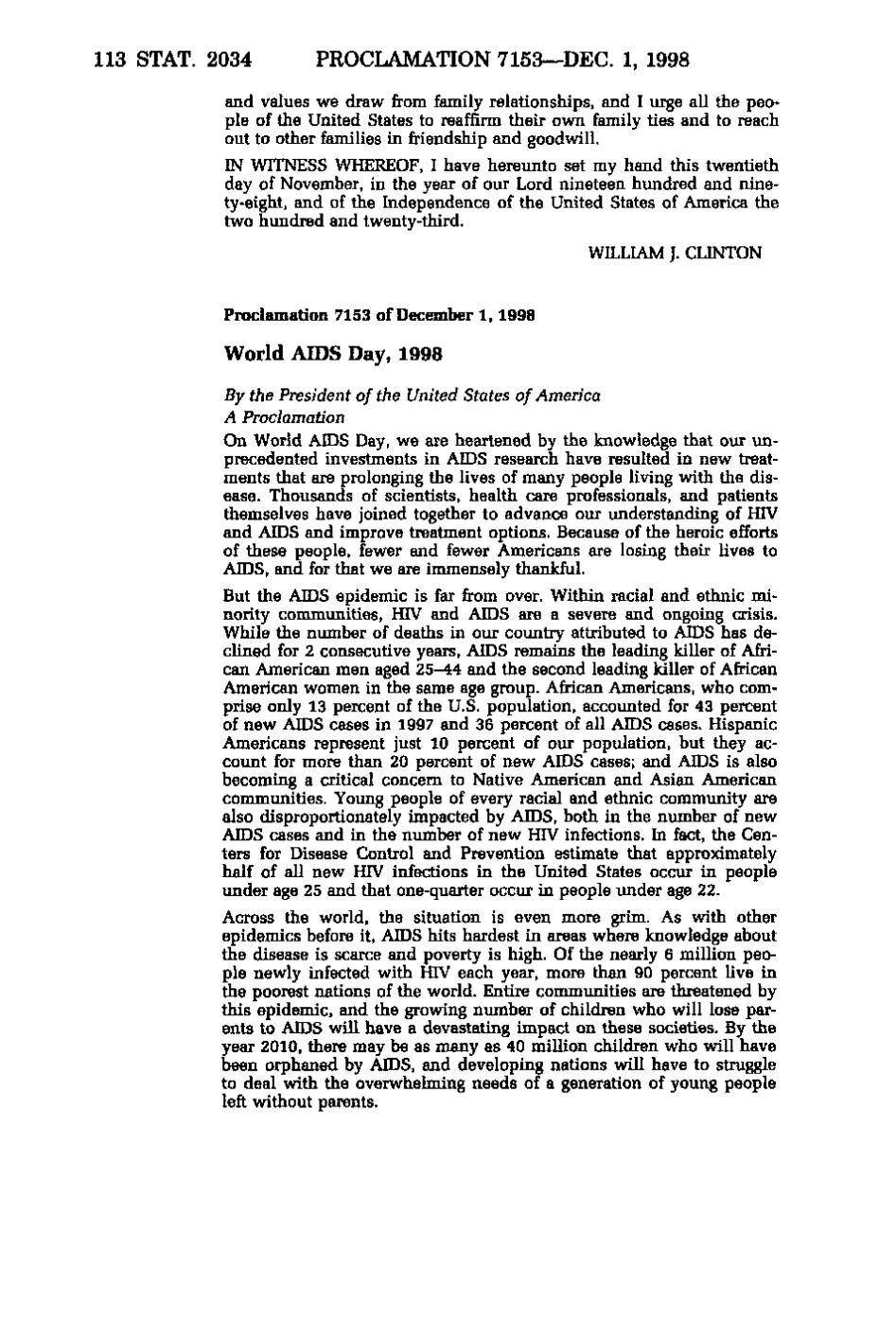113 STAT. 2034 PROCLAMATION 7153—DEC. 1, 1998 and values we draw from family relationships, and I urge all the people of the United States to reaffirm their own family ties and to reach out to other families in friendship and goodwill. IN WITNESS WHEREOF, I have hereunto set my hand this twentieth day of November, in the year of our Lord nineteen hundred and ninety-eight, and of the Independence of the United States of America the two hundred and twenty-third. WILLIAM J. CLINTON Proclamation 7153 of December 1, 1998 World AIDS Day, 1998 By the President of the United States of America A Proclamation On World AIDS Day, we are heartened by the knowledge that our unprecedented investments in AIDS research have resulted in new treatments that are prolonging the lives of many people living with the disease. Thousands of scientists, health care professionals, and patients themselves have joined together to advance our understemding of HTV and AIDS and improve treatment options. Because of the heroic efforts of these people, fewer and fewer Americans are losing their lives to AIDS, and for that we are immensely thankful. But the AIDS epidemic is far from over. Within racial and ethnic minority communities, HIV and AIDS are a severe and ongoing crisis. While the number of deaths in our country attributed to AIDS has declined for 2 consecutive years, AIDS remains the leading killer of African American men aged 25-44 and the second leading killer of African American women in the same age group. African Americems, who comprise only 13 percent of the U.S. population, accounted for 43 percent of new AIDS cases in 1997 and 36 percent of all AIDS cases. Hispanic Americans represent just 10 percent of our population, but they account for more than 20 percent of new AIDS cases; and AIDS is also becoming a critical concern to Native American and Asian American communities. Yoring people of every racial and ethnic commiuiity are also disproportionately impacted by AIDS, both in the number of new AIDS cases and in the number of new HIV infections. In fact, the Centers for Disease Control and Prevention estimate that approximately half of all new HIV infections in the United States occur in people under age 25 and that one-quarter occur in people under age 22. Across the world, the situation is even more grim. As with other epidemics before it, AIDS hits hardest in areas where knowledge about the disease is scarce and poverty is high. Of the nearly 6 million people newly infected with HIV each year, more than 90 percent five in the poorest nations of the world. Entire communities eire threatened by this epidemic, and the growing number of children who will lose parents to AIDS will have a devastating impact on these societies. By the year 2010, there may be as many as 40 million children who will have been orphaned by AIDS, and developing nations will have to struggle to deal with the overwhelming needs of a generation of yotuig people left without parents.
�
